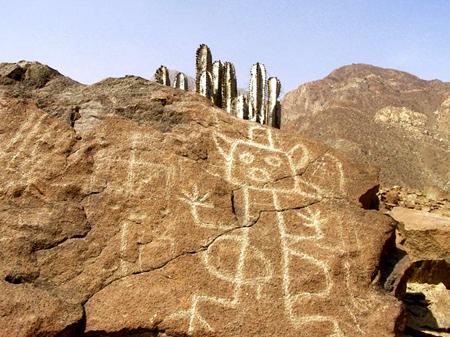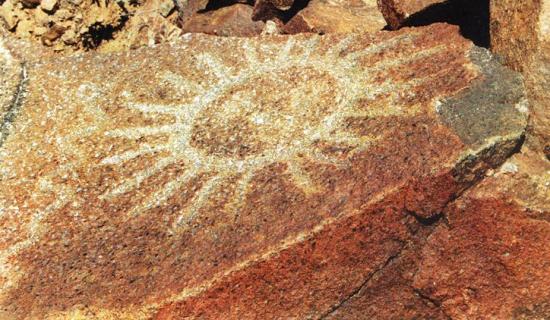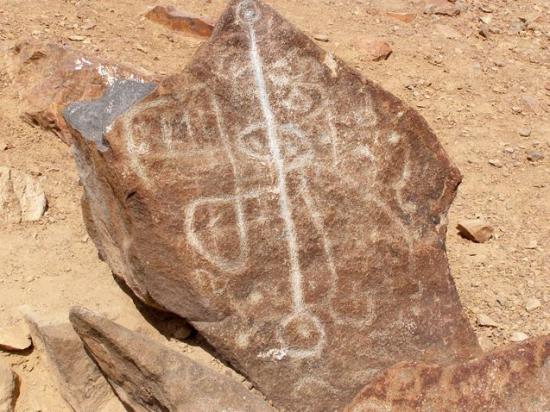The Checta Petroglyphs
Martin Barco
Source - http://www.bradshawfoundation.com/peru/index.php
 The word Checta means 'broken rock or cracked firewood' in Quechua, an ancient language still spoken in some parts of the highlands of Peru. The Checta Petroglyphs, discovered in 1925 by the priest Pedro Villar Cordova, are composed of almost 100 rocks, depicting approximately 450 carved images which resemble humans, animals, plants, celestial bodies and other drawings with abstract characters of difficult identification. Most of the petroglyphs face north and northwest.
The word Checta means 'broken rock or cracked firewood' in Quechua, an ancient language still spoken in some parts of the highlands of Peru. The Checta Petroglyphs, discovered in 1925 by the priest Pedro Villar Cordova, are composed of almost 100 rocks, depicting approximately 450 carved images which resemble humans, animals, plants, celestial bodies and other drawings with abstract characters of difficult identification. Most of the petroglyphs face north and northwest.
They are scattered in an archaeological area of about 8000 square meters in Querena Hill at the confluence of Alcaparrosa Ravine with the left bank of Chillon River Valley at approximately 1200m in the District of Santa Rosa de Quives, Province of Canta, Department of Lima, in Peru.

The age of The Checta petroglyphs is uncertain; however, according to Villar Cordova, they could have been made by archaic cultures, such as 'the Cantas" 1,800BC, because of the surprisingly analogy between some glyphs and the anthropoid-feline deity of the Chavin Culture. Villar also hypothesized about the purpose of the petroglyphs: he believed that they may have been used for ritual purposes or for tribal land ownership marking.

Watch the new film by Martin Barco on the Checta petroglyphs of Peru: in Spanish with English subtitles.
To watch the film click here